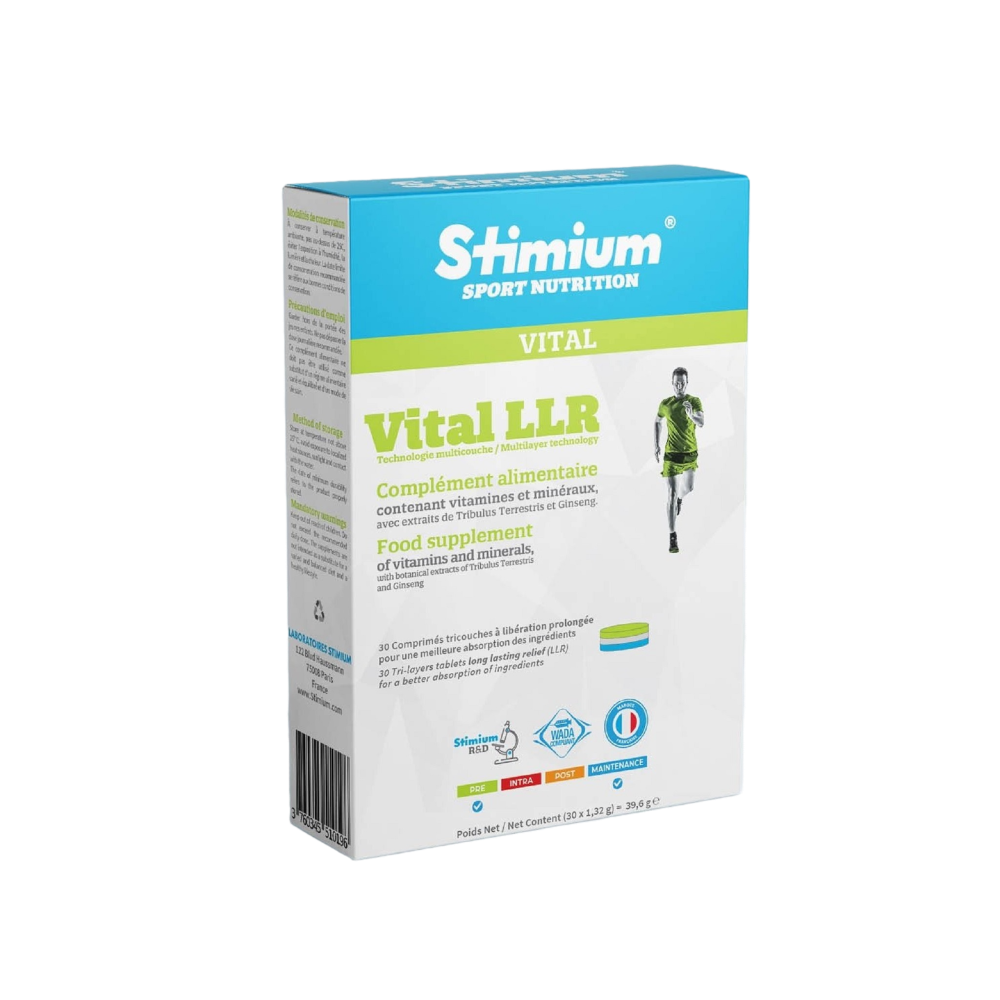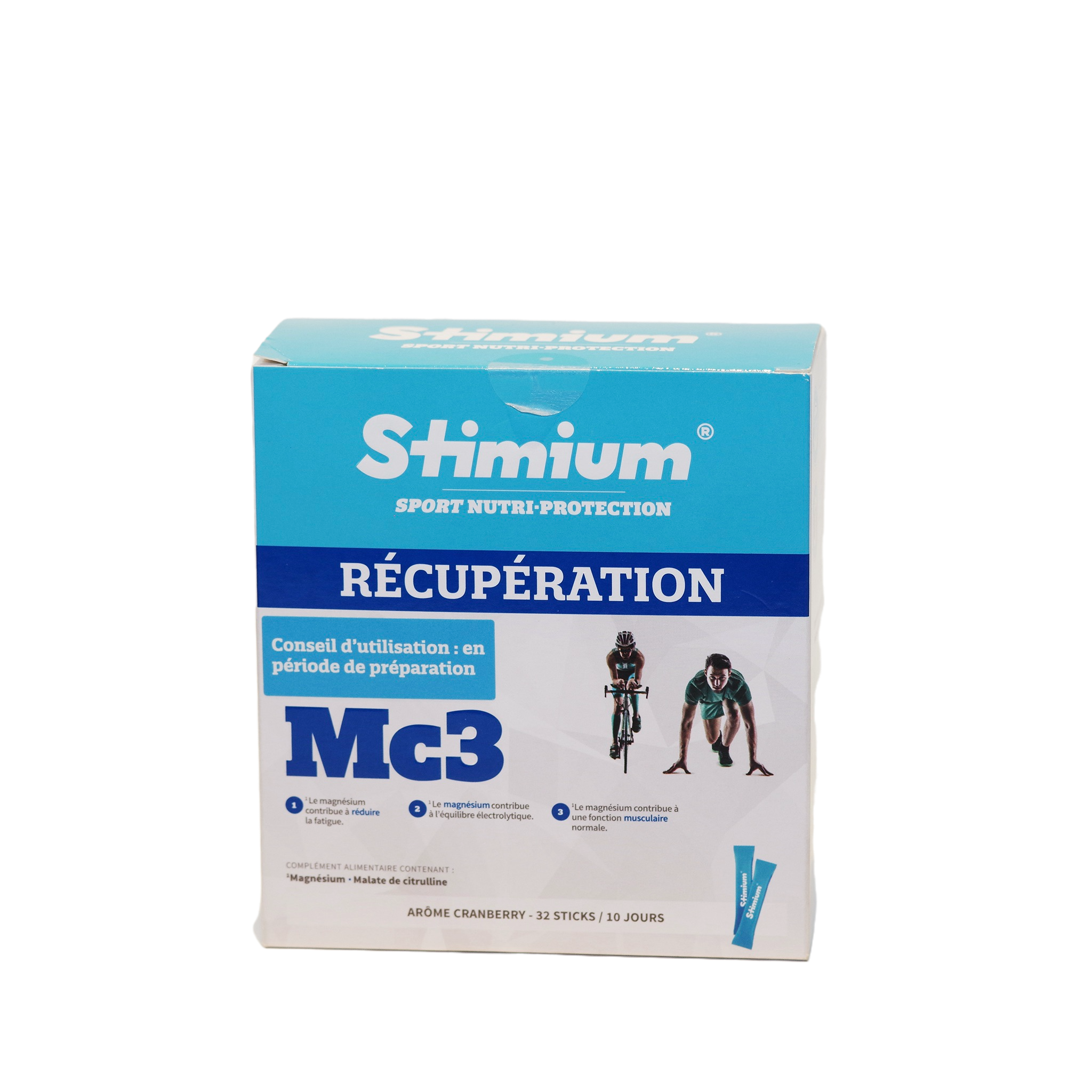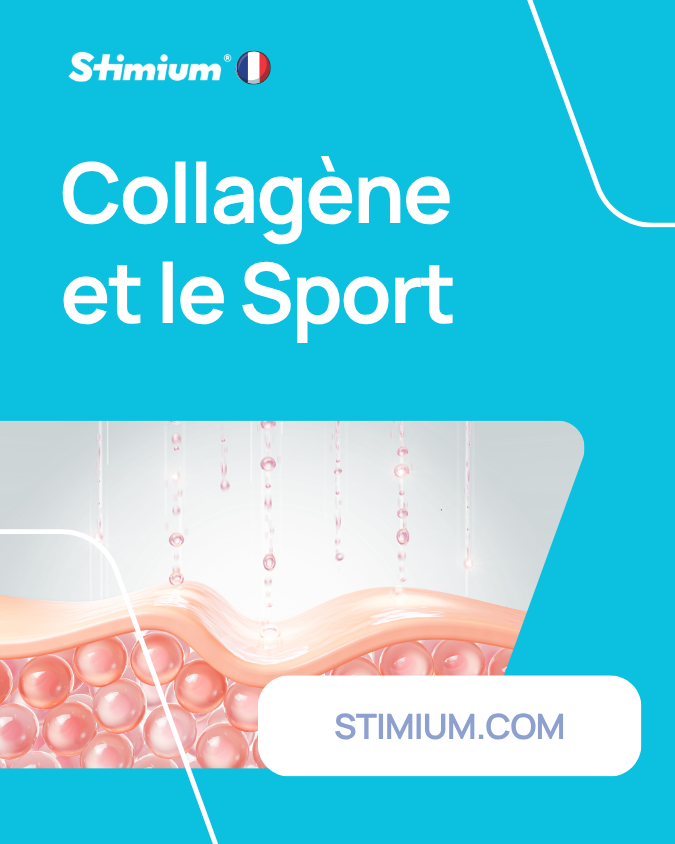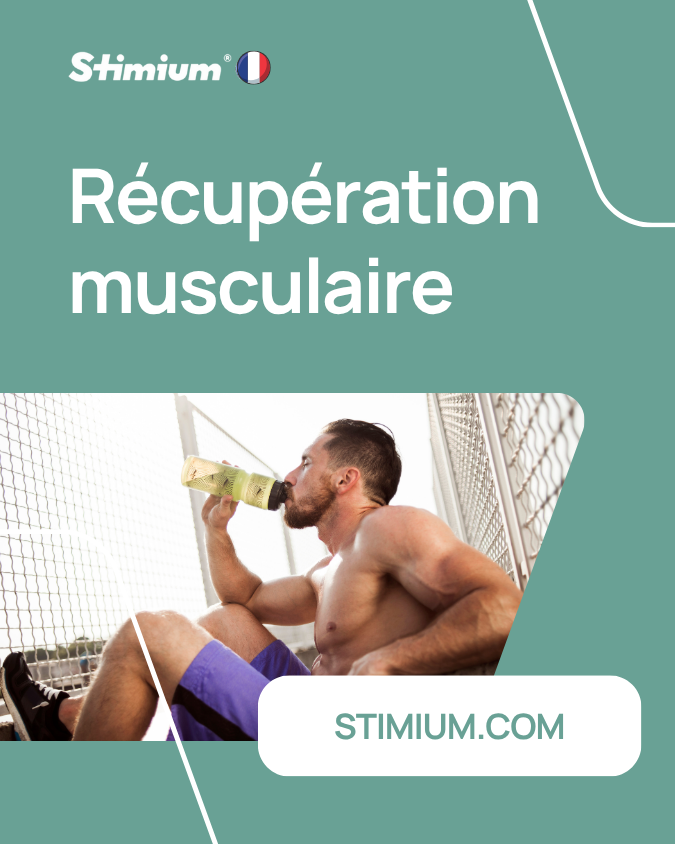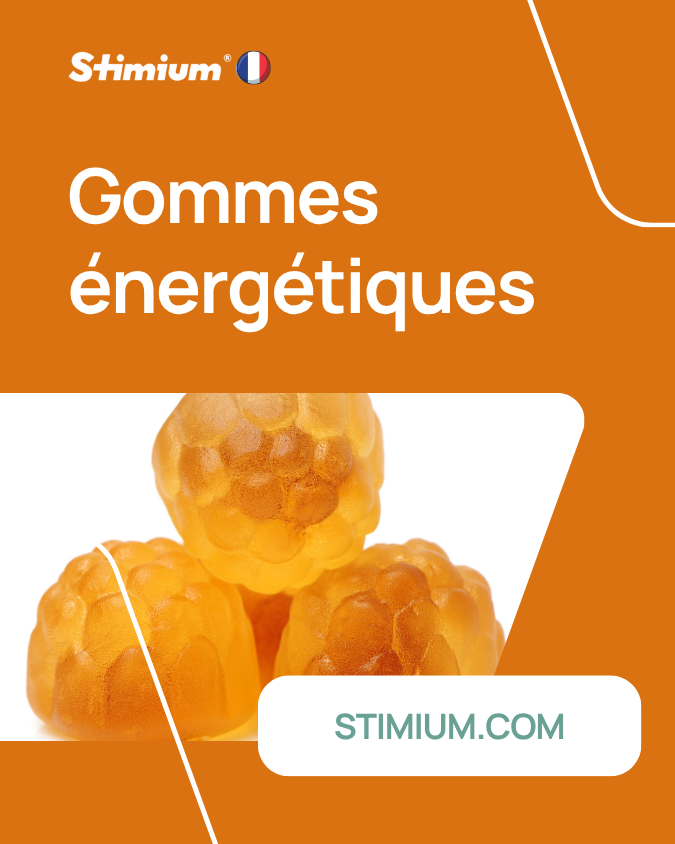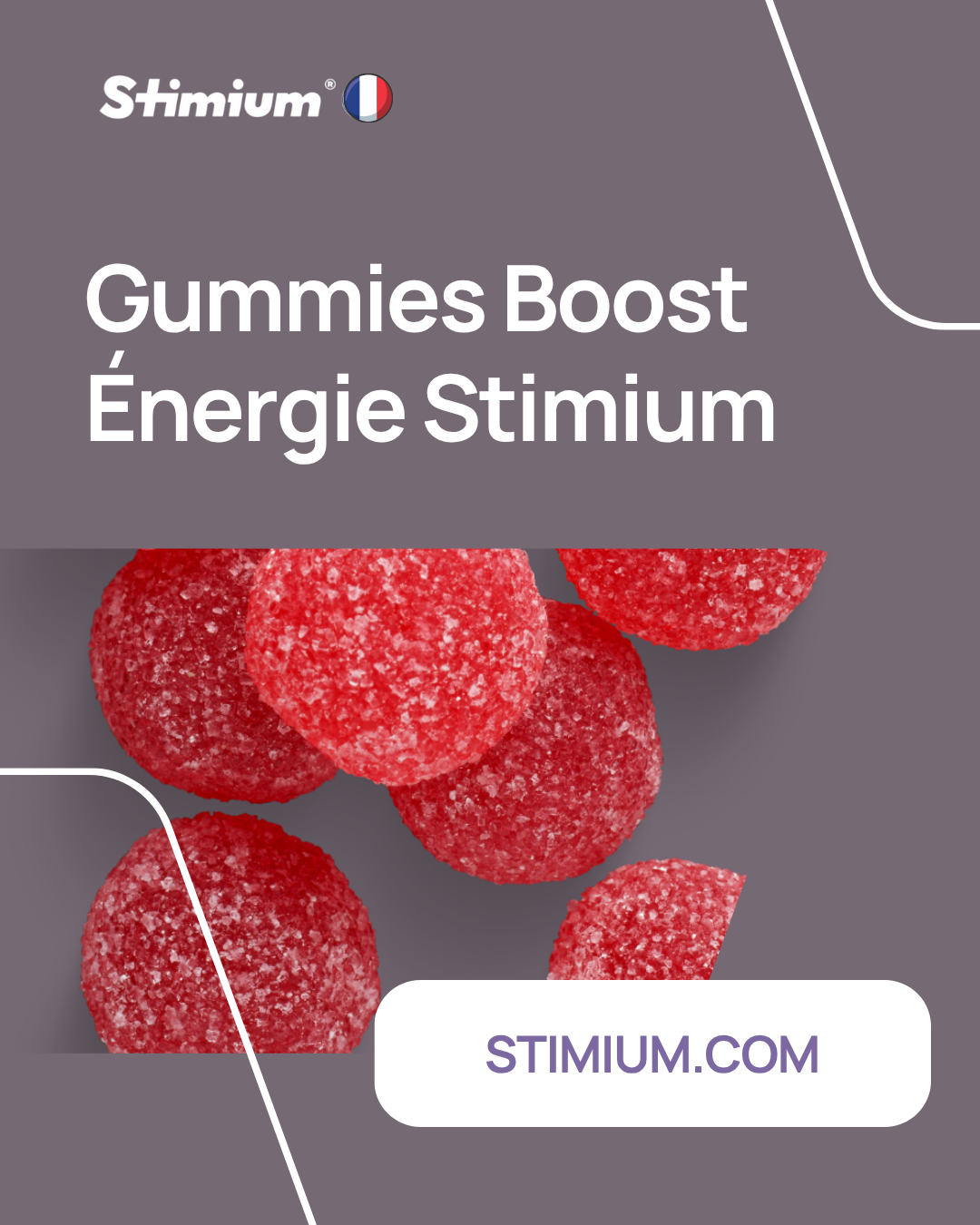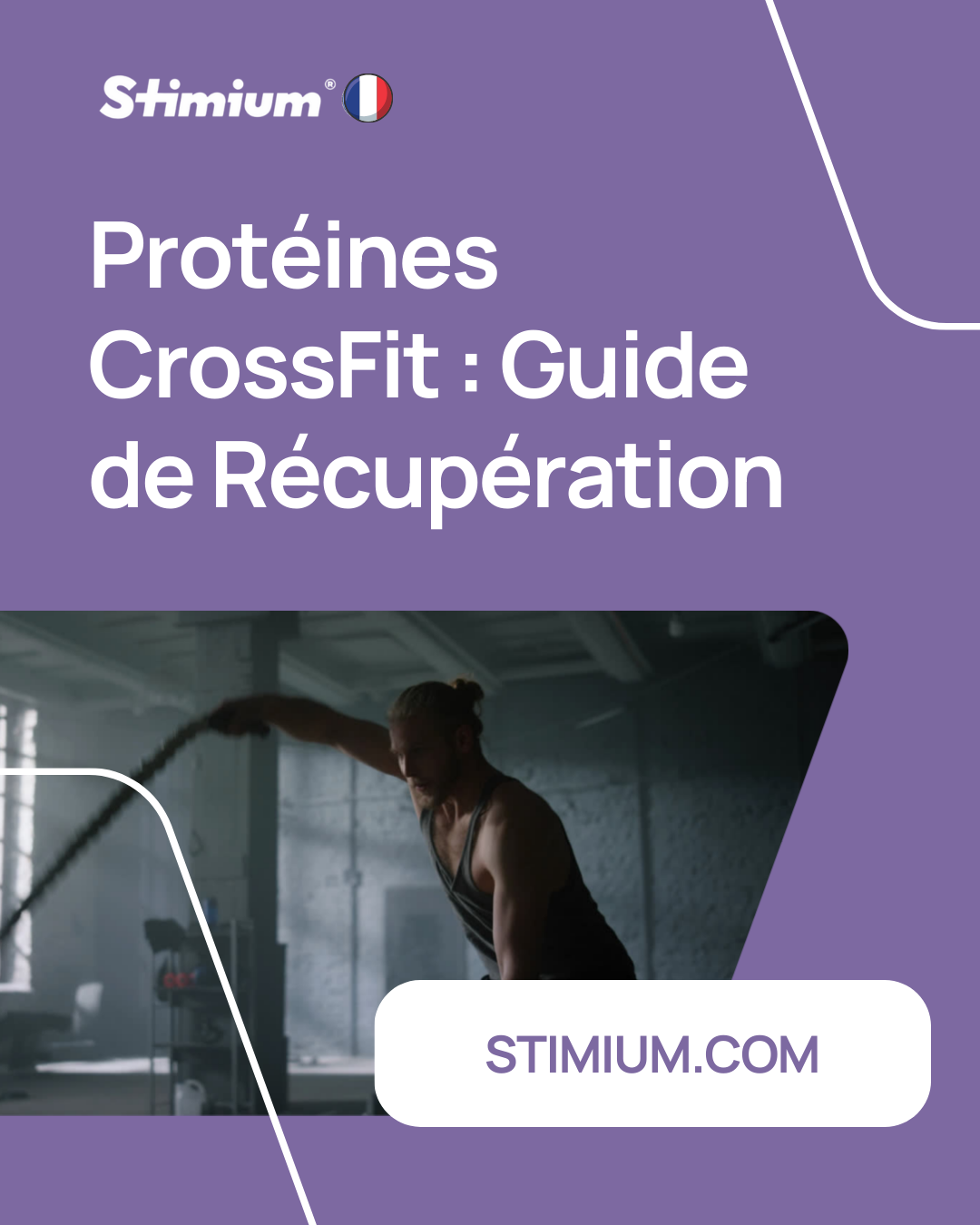Minerals and trace elements
Minerals and trace elements
Minerals and trace elements:
What is this ?
Minerals are inorganic mineral substances, present in small quantities in our food, essential for the vital balance of the body.
They are divided into two groups:
Minerals: calcium, sodium, potassium, magnesium, phosphorus, chlorine
Trace elements: iron, zinc, copper, selenium, iodine, manganese, vanadium, cobalt, silicon, nickel, fluorine, chromium, molybdenum, bromine
We speak of trace elements when they constitute a content of less than 1 mg/kg of body weight . The major property of these minerals is their ability to bind to specific proteins (metallo-proteins) in particular enzymes and thus modify their structures .
Calcium:
What is this ?
Calcium is the most abundant mineral in the body (1-2% of body weight) and is found primarily in the skeleton (which contains 99% of the body's calcium).
What is it for?
Calcium plays a key role in the mineralization and structure of the skeleton and is necessary for many biological functions such as neuromuscular excitability (activation of actin-myosin bridges and opening of calcium-gated synaptic channels), coagulation blood (activation of hemostasis factors), membrane permeability (membrane transport proteins), release of hormones (e.g. insulin), activation of enzymes and cell signaling .
The level of calcium in the blood (serum calcium) is finely regulated by parathyroid hormone, the active metabolite of vitamin D (1,25-dihydroxycholecalciferol) and a protein hormone inhibiting bone loss (calcitonin), all in connection with bone calcium reserves.
Calcium absorption is positively influenced by vitamin D. Regulation of calcium metabolism is characterized by control of intestinal absorption and urinary excretion as well as bone loss and formation. In addition to its urinary and fecal elimination, calcium is also lost through sweat (around 40 mg/d).
What are the effects of a deficiency?
A reduction in bone mass due to insufficient calcium intake or malabsorption leads to skeletal damage such as loss of bone strength.
( osteoporosis ) or loss of bone density ( osteomalacia ) which increase the risk of fracture.
Where can it be found in food?
Among foods rich in calcium, we find dairy products, legumes, nuts, cereal products, certain leafy vegetables (cabbage, chard, spinach, etc.), seafood and certain hard waters (Ciqual 2017). The nutritional references for calcium are:
Where can it be found in Stimium® products?
Increase in work performed, simple and repetitive exercises and muscular adaptation during exercise / reduces the effect of physical and mental fatigue
Improves performance and alertness / Reduces muscular and mental fatigue
Reduces fatigue / Maintains water-electrolyte and acid-base balance / Antioxidant action
Reduces fatigue / Maintains water-electrolyte and acid-base balance / Antioxidant action
Contributes to maintaining better physiological and mental vitality / Helps with the proper functioning of nervous, muscular, immune and vision systems
Chlorine:
What is this ?
In the body, chlorine is present in the form of the chloride ion (Cl-). The chloride ion is the predominant anion in intracellular fluids and one of the most important extracellular anions.
What is it for?
It contributes to many functions such as maintaining the balance between intra and extracellular fluids ( osmotic balance ), regulating PH (acid-base balance), as well as neuromuscular activity (Efsa 2019a).
What are the effects of a deficiency?
Chlorine deficiency (hypochloremia) can manifest as fatigue , muscle cramps , agitation , tetany , and heart rhythm disturbances .
Where can it be found in food?
The foods richest in chlorine are foods to which sodium chloride has been added during the processing process, for its preservation or for other purposes (Efsa 2019a), such as cold meats, cheeses, smoked fish salty (Ciqual 2017). The nutritional references for chlorine are:
Where can it be found in Stimium® products?
Reduces fatigue / Maintains water-electrolyte and acid-base balance / Antioxidant action
Reduces fatigue / Maintains water-electrolyte and acid-base balance / Antioxidant action
Chromium:
What is it for?
Trivalent chromium (Cr 3+ ) is a trace element described as necessary for the regulation of carbohydrate, lipid and protein metabolism by insulin via the increase in its receptors and the increase in sensitivity to insulin.
However, the molecular mechanisms involved in its effects have not been clearly demonstrated in humans and animals. The essentiality of intake as a nutrient in healthy subjects is currently called into question (Vincent 2017; Efsa 2014c).
What are the effects of a deficiency?
A chromium deficiency can be observed in people who want to lose weight by reducing their intake of carbohydrates, fats and proteins. In fact, chromium is more easily assimilated when combined with macronutrients. Symptoms of chromium deficiency may include weight loss , confusion , difficulty coordinating , and reduced reaction time .
Where can it be found in food?
Chromium is found in all foods, the main food sources reported by Efsa are meat, fats, bread and cereals, fish, legumes and spices (Efsa 2014c). An adequate intake (AS) of chromium is 65 µg/d for men over 18 years old and 55 µg/d for women over 18 years old.
Where can it be found in Stimium® products?
Improves performance and alertness / Reduces muscular and mental fatigue
Source of energy for the muscle / Improves alertness and reduces fatigue / Contributes to normal energy metabolism / Powerful antioxidant
Combination of several active ingredients to burn fat / suppress appetite
Contributes to maintaining better physiological and mental vitality / Helps with the proper functioning of nervous, muscular, immune and vision systems
Copper :
What is this ?
Copper is an essential trace element that is finely regulated (homeostatic regulation), it is stored in the liver and is excreted mainly through the bile ducts (90%).
What is it for?
Copper occurs as a component of many enzymes (metalloenzymes or mineral-bound enzymes) engaged in electron exchange reactions (oxidoreduction reactions).
Copper plays a role in the quality of cartilage , the integrity of supporting tissue (connective tissue), bone mineralization (collagen synthesis), the regulation of neurotransmitters (conversion of dopamine to norepinephrine), cardiac function , immune functions and iron metabolism (transformation of Fe 2+ into Fe 3+ ). Finally, copper plays an indirect role in protecting cells against reactive oxygen-derived species ( antioxidant ).
What are the effects of a deficiency?
Symptoms of copper deficiency are diverse and include low hemoglobin ( anemia ), high cholesterol ( hypercholesterolemia ), low white blood cells ( neutropenia ), low circulating white blood cells ( leukopenia ). ).
Where can it be found in food?
According to Ciqual data, the foods richest in copper are offal, crustaceans and molluscs as well as oilseeds (Ciqual 2017). The nutritional references for copper are:
Where can it be found in Stimium® products?
Source of energy for the muscle / Improves alertness and reduces fatigue / Contributes to normal energy metabolism / Powerful antioxidant
Contributes to maintaining better physiological and mental vitality / Helps with the proper functioning of nervous, muscular, immune and vision systems
Iron :
What is it for?
This trace element is considered to be the most present in the body . Iron is necessary for the transport and use of oxygen (hemoglobin, myoglobin, electron transfer in the mitochondria), as well as for various electron exchange reactions (oxidoreduction reactions). It participates in the synthesis of numerous enzymes involved in the production of steroid hormones (estrogens, testosterone, cortisol) and intervenes in mitochondrial enzymatic pathways . Iron is necessary for the production of support tissues (connective tissues), for the proper functioning of the immune system and for the synthesis of molecules allowing the transfer of nervous information ( neurotransmitters such as catecholamines and serotonin).
The body of an adult man contains approximately 4g of iron, the majority of which (70%) is present in heme form (associated with hemoglobin and myoglobin), the remainder being in non-heme form (transport form and reserve). Even if iron losses are not regulated (cell renewal of epithelia, bleeding), they are limited (1 to 2 mg/day in adults) thanks to effective recycling of iron bound to red blood cells (erythrocyte iron). Control of iron levels is essentially based on the regulation of its intestinal absorption and its reserves, which makes it possible to balance losses and respond to increased needs in certain physiological situations (pregnancy, growth).
What are the effects of a deficiency?
The best-established consequence of iron deficiency is a reduction in the number of red blood cells ( anemia ). The populations most at risk are populations whose iron needs are high due to growth (infants, children, pregnant women), heavy losses (women whose menstrual losses are abundant, pathologies associated with occult or visible bleeding ) or due to poor absorption (for example due to inflammation or infection) (Efsa 2015a). The first signs of iron deficiency are often manifested by a decline in intellectual abilities (loss of lucidity) and behavioral problems (irritability, demotivation).
Where can it be found in food?
Iron is present in foods in both forms. Heme iron is present exclusively in animal flesh (meat and derived products, offal, fish and seafood) of which it constitutes, depending on the species and pieces, 15 to 80% of the iron present.
Non-heme iron (or metallic iron) is present in most foods, whatever their origin (animal or vegetable). Among the foods richest in iron, we find liver, meats (whatever their type), fish and seafood, legumes, nuts, cereals, egg yolk and vegetables. green leaves (Ciqual 2017). The nutritional references for iron are:
Where can it be found in Stimium® products?
Source of energy for the muscle / Improves alertness and reduces fatigue / Contributes to normal energy metabolism / Powerful antioxidant
Iodine:
What is it for?
Iodine is essential for the synthesis of thyroid hormones (tri-iodothyronine (T3) and tetra-iodothyronine (T4)) which play a fundamental role in the processes of growth (central nervous system and bones) and cell maturation ( neuronal connections and myelination), in heat production (thermogenesis), carbohydrate-lipid balance (homeostasis), as well as in the modulation of protein synthesis .
What are the effects of a deficiency?
Iodine deficiency is associated with abnormal thyroid enlargement . Severe forms of deficiency can lead to insufficient production of thyroid hormones (hypothyroidism).
Where can it be found in food?
According to Ciqual data, the foods richest in iodine are seaweed, iodized salt, marine fish, molluscs and crustaceans, as well as egg yolk and milk depending on the diet of the animals (Ciqual 2017). The nutritional references for iodine are:
Where can it be found in Stimium® products?
Source of energy for the muscle / Improves alertness and reduces fatigue / Contributes to normal energy metabolism / Powerful antioxidant
Magnesium:
What is this ?
The human body, as an adult, contains approximately 25g of magnesium, approximately 50 to 60% of which is located in the bones and 25% in the muscles . Extracellular magnesium represents only 1% of body magnesium. It is the fourth most abundant cation (positive ion) in the body and the most abundant intracellular cation after potassium.
What is it for?
This mineral is involved in more than three hundred enzymatic systems. It is involved in numerous metabolic pathways and physiological functions such as energy production and in reactions involving ATP (cell energy source), notably in the metabolism of carbohydrates, lipids, nucleic acids and proteins, the maintenance of cell membrane potential , ionic transport , regulation of potassium flux and calcium metabolism .
What are the effects of a deficiency?
A deficiency in this element can have numerous pathological consequences such as gastrointestinal and renal disorders . A deficiency with a blood magnesium concentration below 1.8 mg/dL (hypomagnesemia) can lead to a blood calcium concentration below 8.8 mg/dL ( hypocalcemia ) and a blood potassium concentration below 3.5 mmol /L ( hypokalemia ) with cardiac and neurological symptoms .
The kidney is the main organ involved in magnesium balance (filtration and renal reabsorption). In the event of a prolonged deficiency, magnesium, particularly in the bone compartment, contributes to maintaining balance (magnesemia) (Efsa 2015g).
Where can it be found in food?
According to Ciqual data, the foods richest in magnesium are oilseeds, chocolate, coffee, whole grains as well as molluscs and crustaceans and certain mineral waters (Ciqual 2017). The nutritional references for magnesium are:
Where can it be found in Stimium® products?
Reduces muscle fatigue and relieves cramps
Increase in work performed, simple and repetitive exercises and muscular adaptation during exercise / reduces the effect of physical and mental fatigue
Contributes to maintaining better physiological and mental vitality / Helps with the proper functioning of nervous, muscular, immune and vision systems
Manganese:
What is it for?
Manganese (Mn) is a trace element existing in many states. The Mn2+ and Mn3+ forms are the most active biological forms.
Manganese is the component or activator of many enzymes. It is notably involved in carbohydrate metabolism (compound necessary for the activity of enzymes, synthesis and secretion of insulin) and lipid metabolism (synthesis of cholesterol), the formation of cartilage and bones (glycosyltransferase), healing (necessary for the activation of an enzyme involved in the regulation of collagen synthesis), but also in the protection of cells against unstable molecules in the body (antioxidant via Mn-superoxide dismutase).
In adults, intestinal absorption of manganese is low: less than 5%. As for its bioavailability, it would be reduced by nutrients such as iron, calcium, polyphenols and fiber (Afssa 2001).
What are the effects of a deficiency?
A manganese deficiency can lead to a greater predisposition to infections and poorer healing , negative effects on bone and cartilage formation and a problem with blood sugar regulation .
Where can it be found in food?
According to CIQUAL data, the foods richest in manganese are oilseeds, mollusks and crustaceans as well as chocolate.
According to data from the INCA2 study, the main contributors to the manganese intake of the French adult population are bread and bread products (24.4%), hot drinks (tea and chocolate) (9.6%). ), fruits (8.5%) and vegetables (8.3%). According to ANSES, an adequate intake (AS) of manganese is 2.8 mg/day for men over 18 years old and 2.5 mg/day for women over 18 years old.
Where can it be found in Stimium® products?
Source of energy for the muscle / Improves alertness and reduces fatigue / Contributes to normal energy metabolism / Powerful antioxidant
Synergistically effective in joint inflammation, mobility and flexibility problems / Avoids morning stiffness
Contributes to maintaining better physiological and mental vitality / Helps with the proper functioning of nervous, muscular, immune and vision systems
Molybdenum:
What is it for?
Molybdenum is an essential compound of certain enzymes, it accelerates electron exchange reactions (oxidoreduction). It is thus involved in the metabolism of amino acids containing sulfur, heterocyclic compounds (such as purines and pyrimidines, precursors of nucleic acids) and aromatic aldehydes .
What are the effects of a deficiency?
Molybdenum deficiency is rare. It can cause effects such as increased heart rate (tachycardia), severe headaches , nausea and vomiting .
Where can it be found in food?
Molybdenum is present in almost all foods in trace amounts. Foods containing high amounts are legumes, cereals and cereal products, offal (liver, kidneys) and nuts (Efsa 2013b). The content of molybdenum in plants varies greatly depending on the properties of the soil in which they grow (WHO 1996). Molybdenum concentrations in drinking water are usually less than 10 μg/L (WHO 2008). The nutritional references for molybdenum are:
Where can it be found in Stimium® products?
Source of energy for the muscle / Improves alertness and reduces fatigue / Contributes to normal energy metabolism / Powerful antioxidant
Contributes to maintaining better physiological and mental vitality / Helps with the proper functioning of nervous, muscular, immune and vision systems
Phosphorus:
What is this ?
Phosphorus exists in the body in the form of phosphates, notably calcium and potassium. In adults, approximately 85% of phosphorus is located in bones and teeth , 14% in soft tissues , including muscles, liver, heart and kidneys, and only 1% is present in extracellular fluids.
What is it for?
Phosphorus is involved in many physiological processes such as the storage and transport of energy (ATP), the regulation of the body's PH , cell signaling , bone and dental mineralization . In addition, it is an essential component of biological membranes (phospholipid component).
The balance of phosphorus is closely linked to that of calcium and controlled by parathyroid hormone (PTH), the active form of vitamin D (1,25-dihydroxyvitamin D) and a hormone that affects intestinal absorption and urinary elimination (phosphatonin).
What are the effects of a deficiency?
Phosphorus deficiency, defined by a blood inorganic phosphorus concentration below 0.80 mmol/L, is rarely due to a deficit in phosphorus intake. It is rather the consequence of metabolic disorders, a bacterial infection of the blood (sepsis), alcoholism or major trauma.
The clinical signs of deficiency vary greatly. These include anorexia , low levels of red blood cells ( anemia ), muscle weakness , pain and bone loss (osteomalacia) (Efsa 2015b).
Where can it be found in food?
Foods rich in phosphorus include cow's milk and dairy products, eggs, oilseeds, fish, offal (mainly liver) and meat (Ciqual 2017). The nutritional references for phosphorus are:
Where can it be found in Stimium® products?
Improves performance and alertness / Reduces muscular and mental fatigue
Contributes to maintaining better physiological and mental vitality / Helps with the proper functioning of nervous, muscular, immune and vision systems
Potassium:
What is it for?
Potassium is the main intracellular positive ion (cation) in the body. It is mainly involved, with sodium, in maintaining the balance of charges between the intra and extracellular environment ( membrane potential ). Potassium plays a fundamental role in the transmission of nerve information , muscle contraction and heart function . It is also involved in insulin secretion , in carbohydrate (compound necessary for pyruvate kinase) and protein metabolism and in the body's PH balance .
What are the effects of a deficiency?
A potassium deficiency, blood potassium concentration less than 3.5 mmol/L (hypokalemia), mainly results in heart rhythm disturbances , cramps , general weakness (asthenia) and an increase in urine volume (polyuria). It is generally caused by an increase in potassium losses (due for example to diarrhea, vomiting or excessive kidney losses) or the consequence of an increase in PH in the blood (alkalosis).
Hypokalemia resulting from insufficient dietary intake is exceptional and is often associated with very low-calorie diets or malnutrition.
Where can it be found in food?
According to data from Ciqual (Ciqual 2017) and Efsa (Efsa 2016b), foods rich in potassium include, for example, chocolate, bananas, vegetables and dairy products. The nutritional references for potassium are:
Where can it be found in Stimium® products?
Improves performance and alertness / Reduces muscular and mental fatigue
Reduces fatigue / Maintains water-electrolyte and acid-base balance / Antioxidant action
Reduces fatigue / Maintains water-electrolyte and acid-base balance / Antioxidant action
Selenium:
What is this ?
Selenium is a trace element whose physicochemical properties are close to those of sulfur. In animal tissues, it is present in a form coupled with amino acids (selenomethionine and selenocysteine). The vast majority of selenium properties are exerted through its coupled forms (selenoproteins). In humans, twenty-five selenoproteins have been identified to date.
What is it for?
These selenoproteins play an essential role in the transformation of hydrogen peroxide into water (glutathione peroxidases), spermiogenesis (sperm synthesis, selenoprotein P) and the regeneration of vitamins C and E (thioredoxin reductase).
They are also involved in the metabolism of thyroid hormones and in the protection of cells against unstable molecules in the body (antioxidant defenses). Not all functions of selenoproteins are yet known.
What are the effects of a deficiency?
Selenium deficiencies lead to muscle weakness , psychological disorders (depression, anxiety) and seem to be associated with the development of asthma and allergies .
Selenium deficiency is implicated in a disease linked to the myocardium (cardiomyopathy or Keshan disease), the cause of which appears to associate selenium deficiency and infection by a virus (coxsackie virus).
Selenium deficiencies are also involved in various disorders: immune , rheumatological (e.g. Kashin-Beck disease), hormonal (hyper or hypothyroidism) and neurological (e.g. epilepsy syndrome).
Where can it be found in food?
According to Ciqual data, among foods rich in selenium, we find certain fish and seafood, meat, eggs and oilseeds (particularly Brazil nuts) (Ciqual 2017). The nutritional references for selenium are:
Where can it be found in Stimium® products?
Source of energy for the muscle / Improves alertness and reduces fatigue / Contributes to normal energy metabolism / Powerful antioxidant
Contributes to maintaining better physiological and mental vitality / Helps with the proper functioning of nervous, muscular, immune and vision systems
Sodium:
What is this ?
Sodium is the main positive ion (cation) in the extracellular fluid. It is usually present in the form of sodium chloride (NaCl). Sodium is constantly exchanged between the extra and intracellular compartments in order to maintain its balance (homeostasis) within narrow limits and allow the regulation of ion exchanges between the extra and intracellular environments (osmotic pressure). The intracellular sodium concentration is approximately 10% of the extracellular concentration.
What is it for?
The role of sodium is essential in maintaining membrane potential for nerve transmissions and muscle contractions . It also plays an important role in intestinal absorption and renal reabsorption of chlorine, amino acids, glucose and water.
Sodium is eliminated mainly through the urine and perspiration (sweat route). The balance of sodium concentration is closely controlled by different hormonal systems, notably the hormonal system located in the liver (the renin-angiotensin-aldosterone system).
What are the effects of a deficiency?
A plasma sodium concentration below 120 mmol/L (severe hyponatremia) is associated with fluid accumulation in the brain ( cerebral edema ), accompanied by malaise , nausea , loss of consciousness and convulsions .
Where can it be found in food?
The foods richest in sodium are table salt, condiments and sauces as well as cold meats and cheese (Ciqual 2017). The nutritional references for sodium are:
Where can it be found in Stimium® products?
Reduces fatigue / Maintains water-electrolyte and acid-base balance / Antioxidant action
Reduces fatigue / Maintains water-electrolyte and acid-base balance / Antioxidant action
Zinc:
What is this ?
Zinc is an essential trace element involved in many cellular functions, it is mainly found in muscles (60 to 65%), bones (20%), liver, skin and brain (hippocampus, neocortex, amygdala). ).
What is it for?
It is involved in the activity of nearly 300 enzymes and that of more than 2,500 transcription regulatory proteins (zinc finger proteins).
Zinc is notably a protein activator in the fight against the effects of reactive oxygen species (antioxidant effect via superoxide dismutase). Zinc is also involved in the stabilization of the tertiary structure (3D structure) of certain hormones (insulin, thymulin), in the metabolism of polyunsaturated fatty acids and prostaglandins (hormones) as well as in the stabilization of cell membranes .
It is essential for cell growth , the immune system , reproduction , healing , bone metabolism and neurological functions .
The bioavailability of zinc is dependent on numerous dietary factors which can interfere with this element, such as phytates (present in cereals and legumes) which reduce its absorption, or such as iron, calcium and copper which compete with zinc. intestinal absorption with it.
What are the effects of a deficiency?
A zinc deficiency leads to a reduction in immune functions (alteration in the production of circulating immune cells), psychological effects (depression), an increase in blood sugar due to a reduction in insulin in its active form.
Where can it be found in food?
Zinc is mainly found in meat, offal, cheese, legumes, fish and seafood (Ciqual 2017). The nutritional references for zinc are:
Where can it be found in Stimium® products?
Source of energy for the muscle / Improves alertness and reduces fatigue / Contributes to normal energy metabolism / Powerful antioxidant
Improves performance and alertness / Reduces muscular and mental fatigue
Contributes to maintaining better physiological and mental vitality / Helps with the proper functioning of nervous, muscular, immune and vision systems
Appendices:
Bibliographies:
Nutritional references in vitamins and minerals, ANSES opinion, March 2021
Micronutrition and nutritherapy, Jérôme Manetta









